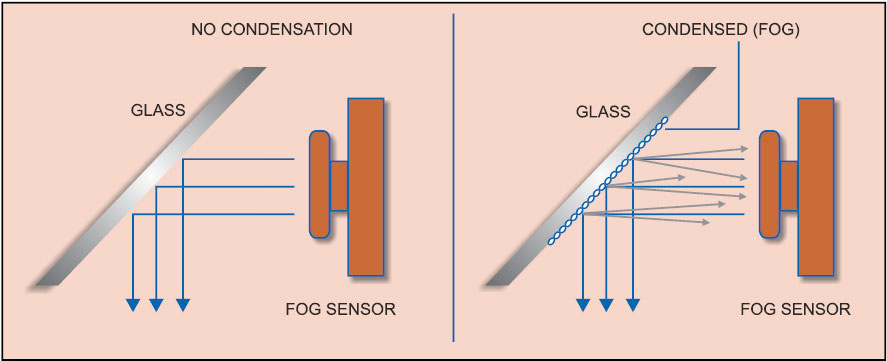Hitting the mark
In order to get the best from an OFS (exterior or interior), you must do your home work well. The exterior sensor should be mounted such that it looks horizontal and there must not be anything in the sightline closer than 5m to 10m. A simple shield protecting the sensor from direct sunlight and lenses from rain, reaching not more than 100mm in the laser beam direction, helps keep away precipitation from the optics. But in most cases, the existing small shield on the sensor front is sufficient.

When mounting an interior sensor (on the windshield), try and limit the overall distance between the glass and the sensor in the range of 4cm to 10cm. The best mounting position for this sensor is between the windshield and the rear-view mirror.
For DIYs
With the help of a ready-made exterior or interior OFS, you can build your own fog-related projects for your home, office and vehicle. Working voltage of an optical fog detector is between 6V DC and 16V DC, with a current requirement in the range of 60mA to 600 mA (refer official datasheet of your OFS).
If you want to study the atmospheric visibility of fog and its constituents, or if you want to fabricate a smart fog-triggered warning system for automobiles, an external MCU circuitry and a few lines of software are required to process output signals (serial data or analogue voltage) available from the OFS.
For basic projects, string output from the OFS can be routed to a logger with RS232 input or to a PC via the serial port and with a terminal program like Hyper Terminal.












Hi!
How much would this fog sensor cost approximately?
i dont think it would be much, maybe as little as $20/sensor. But this current proposal would not be sensitive enough to be effective. Physics of light don’t lie.